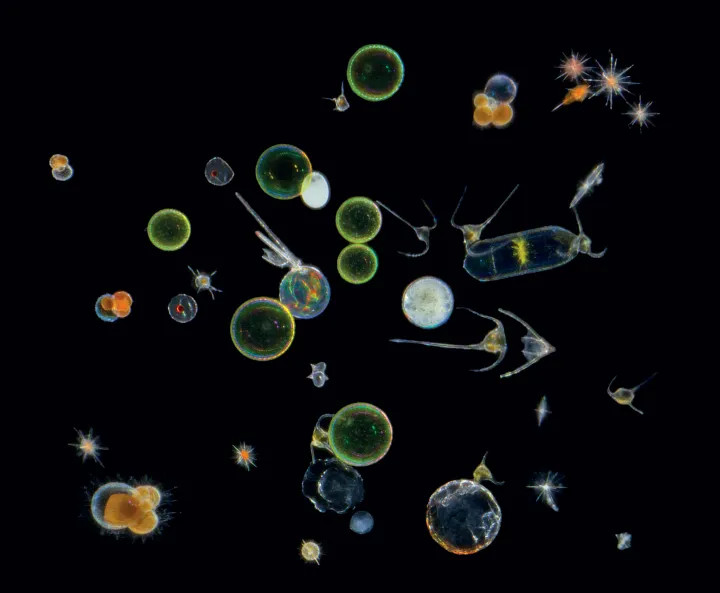A single litre of saltwater contains around one billion bacteria and ten billion viruses. If you weighed all living species in the ocean, microorganisms would account for 90% of the weight.
It may appear outrageous, but we live in a world ruled by viruses. The oceans alone contain around 10³⁰ viruses, which is almost a billion times more than the number of stars in the known universe. A virus is an infectious agent that requires a host cell (such as a bacterium) to reproduce. Once it infects a host, the virus hijacks the cell's reproductive mechanism, and transforms it into a viral replication factory.
On the other hand, while bacteria are frequently perceived as infectious agents, the majority of bacteria are actually quite harmless, and play an important role in global ecosystems. They are also extraordinarily abundant — a single drop of water can contain over 100 different types of bacteria. How do all of these organisms find the energy and nutrients they need to survive?
In the nutrient-rich waters at the ocean's surface, sunlight is the major energy source for micobes, driving photosynthesis, the conversion of light energy into chemical energy. Photosynthesis is limited in much of the open ocean due to nutritional deficiency, and it entirely impossible in the deep ocean due to lack of sunlight. Despite this, bacteria have discovered a means to survive in the huge, dark ocean, acquiring energy from two dissolved gases, hydrogen and carbon monoxide, in a process known as chemosynthesis.
Pictured here is a mixture of single-celled microbes – diatoms, dinoflagellates, radiolarians, and foraminifera (source: Christian Sardet, Plankton – Wonders of the Drifting World, Univ. Chicago Press 2015).




